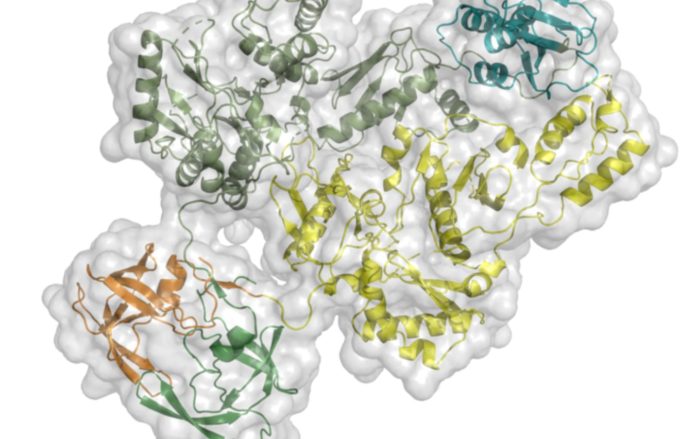For new treatments to be developed that could benefit the almost 40 million people living with HIV today, it is essential to comprehend how HIV multiplies within cells.
Now, a group of researchers from Rutgers University and the Salk Institute has for the first time figured out the molecular structure of HIV Pol, a protein that is essential for the last phases of HIV replication, or how the virus multiplies and spreads throughout the body.
Importantly, identifying the structure of the molecule helps to solve long-standing issues regarding how the protein separates itself to promote the replication process.
The discovery, which was published today in Science Advances, indicates a new vulnerability in the virus that might be exploited with medications.
Dmitry Lyumkis, a co-senior author and assistant professor in the Laboratory of Genetics at Salk, adds that “structure informs function, and the insights we gained from visualizing the molecular architecture of Pol give us a new understanding of the mechanism by which HIV replicates”.
It was previously known that the polyprotein HIV Pol, which breaks down into three enzymes called a protease, reverse transcriptase, and integrase, which combine to generate the virus’ mature form. By breaking up the molecule to release the other parts, the protease plays a crucial part in starting this process.
Previously, it was unknown, however, how the protease itself breaks away, first from the bigger polyprotein HIV Gag-Pol and subsequently from HIV Pol, to execute its operation. The new paper says that reverse transcriptase and possibly integrase help the protease start the process by cutting it loose from the rest of the molecule.
“It was known (but not understood),” says co-senior author Eddy Arnold, adding “that there is a coupling between these enzymes before HIV Pol breaks apart. Visualizing the HIV Pol structure explains the basis for this complex mechanism.”
According to co-first author Jerry Joe Harrison, senior lecturer at the University of Ghana, “the first challenge was producing a stable version of HIV Pol so the structure could be analyzed, which had never previously been reported.”
Arnold continues, “this was a key missing piece of the HIV structural puzzle”.
Cryogenic electron microscopy, an imaging technology to which Lyumkis has contributed significantly, was employed by the researchers to disclose the three-dimensional structure of the HIV pol protein molecule. This led to the discovery that Pol is a dimer, which means that it is made up of two proteins that are attached to each other. The finding was surprising because other viral proteins that are similar to this one are made up of only one protein.
In this two-sided structure, the group showed that the protease part of Pol is “loosely tethered” to the reverse transcriptase part in a way that keeps the protease a bit flexible.
According to co-first author Dario Passos, a former employee of Lyumkis’ Salk lab, “it’s holding the protease at arm’s length, loosely, and we believe that gives the protease a little bit of movement, which in turn allows it to initiate the cutting of polyproteins that is a prerequisite for viral maturation.”
“Current HIV treatments include multiple classes of inhibitors for all three enzymes, and the discovery also reveals a new vulnerability that could be targeted with drugs.”
The discovery, according to the authors, opens the door for significant further investigation, including studies into the structure of the more substantial and intricate polyprotein Gag-Pol, which is also involved in viral assembly, as well as a closer examination of integrase’s function in putting together the mature form of the HIV virus during replication.
Image Credit: FRANCESC XAVIER RUIZ From RUTGERS.
You were reading: New Vulnerability Found In The HIV Could Be Targeted With Drugs
